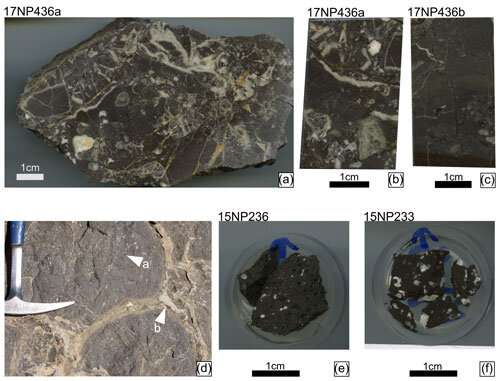Searching for critical minerals in ancient ocean floors

Studying ancient ocean floors could help discover minerals needed to produce electric cars and solar panels.
Researchers at The University of Queensland led a collaborative study that examined the remnants of ocean floors in eastern Australia and central Asia and applied a method to date the age of calcite trapped inside.
Dr. Renjie Zhou from UQ's School of Earth and Environmental Sciences said the findings could make it easier to source critical minerals used in renewable and clean technologies.
"Calcite and other hydrothermal minerals are often observed in critical mineral deposits and form under mineralizing fluid activities," Dr. Zhou said.
"Our work shows that we can trace the history of fluids in the Earth's crust and see when and what mineral resources they might generate."
The renewable energy sector is continuing to grow rapidly with increasing demand for technologies like wind turbines, solar panels, electric vehicles and batteries.
"These often require large quantities of critical minerals," he said.
"Electric vehicles need up to four times more copper than conventional cars and a single wind turbine uses several tons of permanent magnets made of rare earth metals."
Dr. Zhou said being able to study and discover these minerals was going to become increasingly important.
"Researchers across many institutions are doing excellent work in this field, including UQ's Centre for Geoanalytical Mass Spectrometry," Dr. Zhou said.
"Our hope is to expand our collaboration with industry and academia to increase the understanding and discovery of critical minerals in the future."
This research has been published in Geochronology and Communications Earth & Environment.
More information: Johannes Rembe et al, Calcite U–Pb dating of altered ancient oceanic crust in the North Pamir, Central Asia, Geochronology (2022). DOI: 10.5194/gchron-4-227-2022
Goran Andjić et al, Paleozoic ocean plate stratigraphy unraveled by calcite U-Pb dating of basalt and biostratigraphy, Communications Earth & Environment (2022). DOI: 10.1038/s43247-022-00446-1
Journal information: Communications Earth & Environment
Provided by University of Queensland




















